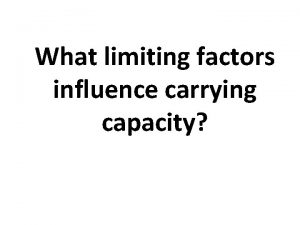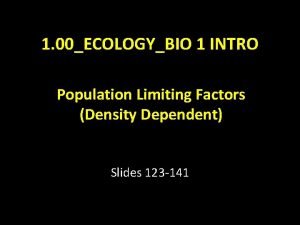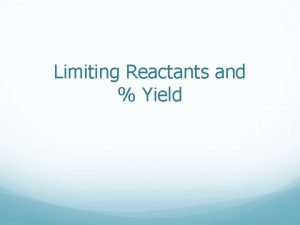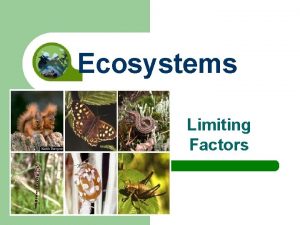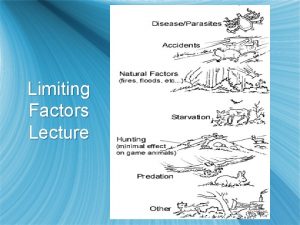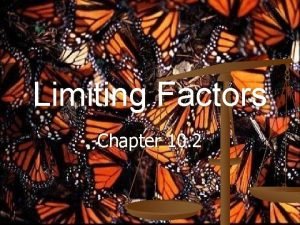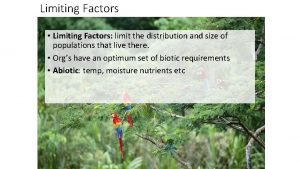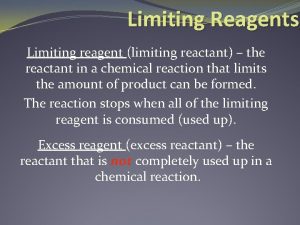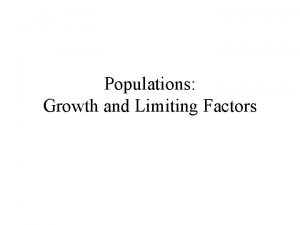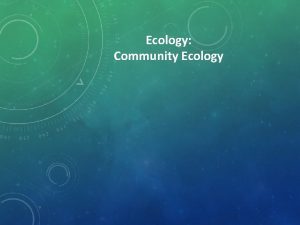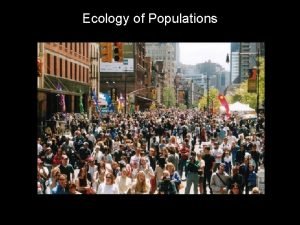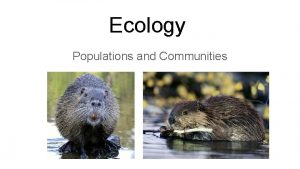Ecology of Populations 1 Limiting factors that affect


















- Slides: 18

Ecology of Populations (1) Limiting factors that affect populations in an ecosystem Hickox: Baker High School Biology

Ecology of Populations (2)_____- Study of the interactions of organisms with other organisms and the physical environment (3)_____ - Place where an organism lives. (4) ________ All the organisms within an area belonging to the same species. (5) _______ All various populations interacting at same locale. (6) _______Community of populations including biotic and abiotic factors. Hickox: Baker High School Biology

Ecological Levels Hickox: Baker High School Biology 3

Hickox: Baker High School Biology 4

Density-Dependent Factors Includes (7) Parasites and (8) Predators Locust plagues Factors that affect population growth and depend on (9)_____ Human (10)______ such as tuberculosis often become epidemics in crowded cities. 5 Hickox: Baker High School Biology

Density-Independent Factors Weather Events Temperature 6

Regulation of Population Size • Density - Dependent Factors – Number of organisms present (13)influences the effect of the factor. (14) Competition (15) Predation (predators) (16) Disease • Density - Independent Factors – Number of organisms present does (17) not influence the effect of the factor. (18) Natural Disasters Hickox: Baker High School Biology 7

Question 1: Which situation is caused by a density-independent limiting factor? A. The influenza outbreak of 1918 -1919 killed over 20 million people. (number of organisms was influenced by factor) B. The cones of the jack pine need heat from a fire to help release seeds. (number of organisms was not influenced by factor) C. A parasite alters reproduction in a woodpecker population causing fewer births. (number of organisms was influenced by factor) D. A queen bee regulates the number of eggs she lays according to the amount of food available. . (number of organisms was influenced by factor) B. Density - Independent Factors • Number of organisms present does not influence the effect of the factor. • Natural Disasters and Temperature Hickox: Baker High School Biology 8

Question 2 Which limiting factor is density-Independent for rainbow trout? A. Size of the stream (number of organisms was not influenced by factor) B. Spread of parasites (number of organisms was influenced by factor) C. Competition for food (number of organisms was influenced by factor) D. Supply of dissolved oxygen (number of organisms was influenced by factor) Density - Independent Factors • Number of organisms present does not influence the effect of the factor. • Natural Disasters and Temperature A. Hickox: Baker High School Biology 9

Question 3: Which statement BEST describes the relationship between natural disasters or human-caused disasters and population size? A. Natural and human-causing disasters are density-dependent factors. (Not Natural Disaster) B. Natural and human-causing disasters are density-independent factors. (Natural Disasters are density-independent) C. Human-causing disasters are density-independent whereas natural disasters are density-dependent. (Not Natural Disaster) D. Human-causing disasters are density-dependent whereas natural disasters are density-independent. (Not Natural Disaster) Density - Independent Factors • Number of organisms present does not influence the effect of the factor. • Natural Disasters Hickox: Baker High School Biology B. 10

Question 4: Which relationship BEST identifies a density-dependent limiting factor? A. A bobcat population declines due to disease. (number of organisms influence the effect of the factor; competition, predation, disease) B. A fish population declines due to a severe drought. (not competition or predation but natural disaster) C. A bird population declines due to pollution. (not competition or predation but disaster) D. A wolf population declines due to a cold winter. (Number of organisms present does not influence the effect of the factor. - Independent) • Density - Dependent Factors – Number of organisms present influences the effect of the factor. • Competition • Predation • Disease Hickox: Baker High School Biology 11 A.

Question 5: Study the table below. Caterpillars can destroy trees by eating too many leaves and making them susceptible to disease or drought. Which student has correctly identified the density-dependent and density-independent limiting factors associated with an invasion of Gypsy Moth Caterpillars? Student Populations of Caterpillars Disease Drought 1 Density-independent Density-dependent 2 Density-dependent Density-independent 3 Density-independent 4 Density-dependent Density-independent Density - Independent Factors • Number of organisms present does not influence the effect of the factor. • Natural Disasters • Density - Dependent Factors – Number of organisms present influences the effect of the factor. • Competition and Predation and Disease Hickox: 4. 12 Baker High School Biology

Question 6: Study the table below. Which student identified only density-independent limiting factors? Student’s Identification of Density-Independent Limiting Factors Student Disease Clear-cutting 1 X X 2 3 4 X X Predation Natural Disaster X X Filling Wetlands X X Density - Independent Factors • Number of organisms present does not influence the effect of the factor. • Natural Disasters • 4. Density - Dependent Factors – Number of organisms present influences the effect of the factor. v Competition and Predation and Disease Hickox: Baker High School Biology 13

Question 7: Which statement BEST explains why a disease my affect one population more than another population? A. Because disease is a density-dependent limiting factor, a larger population makes it easier for the virus to spread from person to person B. Because disease is a density-independent limiting factor, a large population makes it easier for the virus to spread from person to person C. Because disease is a density-dependent limiting factor, climate can influence the disease, making it more or less affective. D. Because disease is a density-independent limiting factor, climate can influence the disease, making it more or less affective. Density - Independent Factors • Number of organisms present does not influence the effect of the factor. • Natural Disasters • Density - Dependent Factors – Number of organisms present influences the effect of the factor. v Competition and Predation and Disease A. 14 Hickox: Baker High School Biology

Uniform Distribution Hickox: Baker High School Biology

Random Distribution Hickox: Baker High School Biology

Clumped Distribution Hickox: Baker High School Biology

Hickox: Baker High School Biology
 Limiting reagent vs limiting reactant
Limiting reagent vs limiting reactant Sau thất bại ở hồ điển triệt
Sau thất bại ở hồ điển triệt Thơ thất ngôn tứ tuyệt đường luật
Thơ thất ngôn tứ tuyệt đường luật Hãy nói thật ít để làm được nhiều
Hãy nói thật ít để làm được nhiều Thơ thất ngôn tứ tuyệt đường luật
Thơ thất ngôn tứ tuyệt đường luật Tôn thất thuyết là ai
Tôn thất thuyết là ai Phân độ lown
Phân độ lown Chiến lược kinh doanh quốc tế của walmart
Chiến lược kinh doanh quốc tế của walmart Gây tê cơ vuông thắt lưng
Gây tê cơ vuông thắt lưng Block xoang nhĩ
Block xoang nhĩ Tìm độ lớn thật của tam giác abc
Tìm độ lớn thật của tam giác abc Limiting factors
Limiting factors Density dependent limiting factors
Density dependent limiting factors Which of these are limiting factors
Which of these are limiting factors Limiting factors in an ecosystem
Limiting factors in an ecosystem![] ]](data:image/svg+xml,%3Csvg%20xmlns=%22http://www.w3.org/2000/svg%22%20viewBox=%220%200%20200%20200%22%3E%3C/svg%3E) ]
] Basic ecological concepts and principles
Basic ecological concepts and principles Limiting factor examples
Limiting factor examples What is a density-dependent limiting factor
What is a density-dependent limiting factor
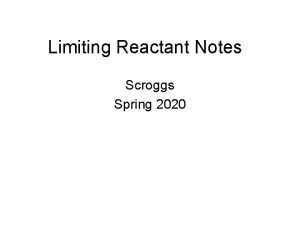










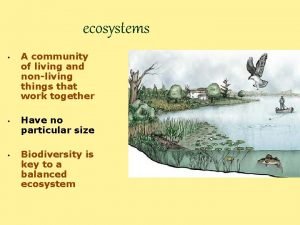
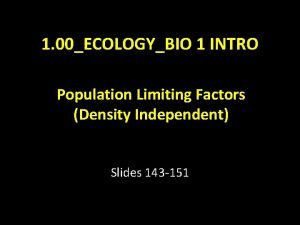
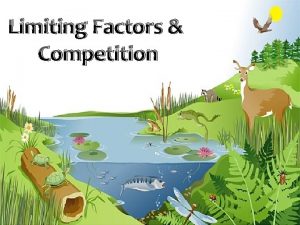
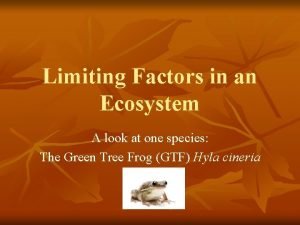
![] ]](https://slidetodoc.com/wp-content/uploads/2020/12/3405254_cec6e3454cee0ab8bacb3b80af9bbcc3-300x225.jpg)

